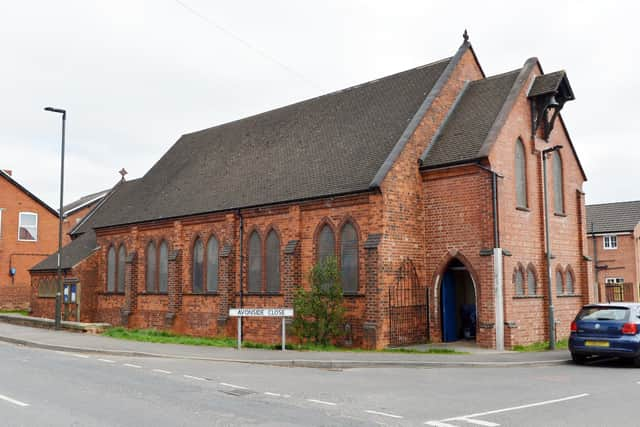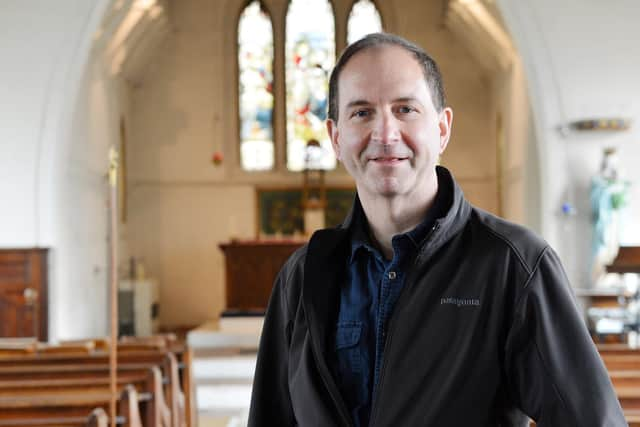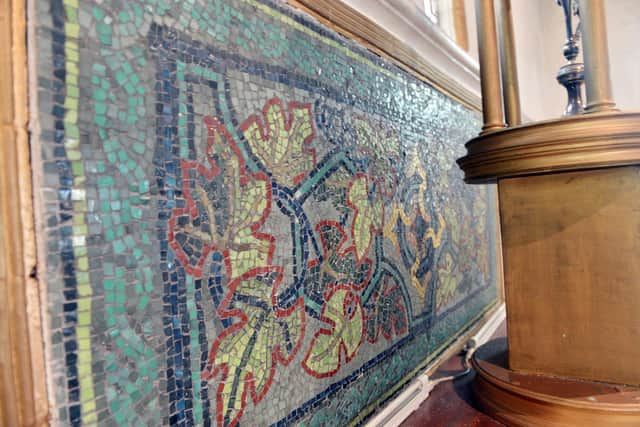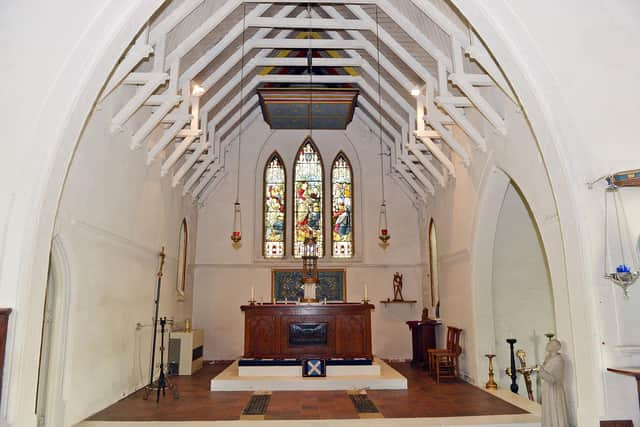Urgent appeal to save Barrow Hill Church - an ‘icon of Britain’s working-class heritage’
and live on Freeview channel 276
St Anthony’s Church, Barrow Hill, has been shut throughout the coronavirus pandemic, but has now been earmarked for permanent closure by the Diocese of Derby – leading to fears over the future of a building described as an “icon of Britain’s working class heritage”.
Dave King, diocese spokesman. said, as the church had not officially closed, it was too soon to talk about any future uses, adding: “At the moment, the closure has not been confirmed, although the process has started.”
Advertisement
Hide AdAdvertisement
Hide AdBut campaigners are now renewing attempts to get the Station Road building ‘listed’ by Historic England, to secure legal protection for it.
However, they have so far been unsuccessful, with the public body, which looks after England's historic environment, ruling it was not architecturally significant.
A Historic England spokeswoman said: “The church has been assessed for listing twice, in 2012 and 2014. These assessments thoroughly considered the building’s architectural and historic significance against the principles of selection laid out by the Department for Digital, Culture, Media and Sport.
“Following our recommendations to Government, the decision was made by the Secretary of State that the building does not reach the high bar for listing.
Advertisement
Hide AdAdvertisement
Hide Ad“While the church is of much local interest, particularly as the first collaboration between internationally recognised architects and town planners Parker and Unwin, it does not have the special architectural and historic interest from a national perspective to justify listing.”


Overwhelming case to be listed
However, those fighting to preserve the building say its social history more than outweighs its architectural merit, having been built by Richard Barry Parker and Raymond Unwin, who worked at Staveley Iron Works and went on to develop Britain’s first garden city, at Letchworth, Hertfordshire, as well as housing schemes at Arkwright Town and Poolsbrook, among many others.
A Derbyshire Historic Buildings Trust spokesman said: “Equally ‘modest designs’ have been listed on the grounds the building is of considerable historic interest. Surely this building meets that criterion?”


The church dates back to the 1890s, when the Duke of Devonshire donated the land and Unwin was asked to design it. Local materials were used, while Parker designed the fixtures and fittings.
Advertisement
Hide AdAdvertisement
Hide AdHugh Ellis, policy director at the Town & Country Planning Association, an independent charity which works to improve town and country planning, said the Station Road church was one of “the most important icons of Britain’s working-class heritage”.
He said: “The TCPA strongly urges Historic England to reconsider the decision not to list St Andrew’s. “We believe there is an overwhelming case for such a designation, not solely on the grounds of intrinsic architectural value, but in relation to the iconic role these building plays in the formative development of two of the greatest figures in the British and international Garden City movement.”
Chesterfield Council has also been trying to get the building listed.


A council spokesman said: “We have previously made an attempt to get the building listed, supported with considerable evidence from the TCPA, unfortunately without success.”
Extraordinary piece of history
Advertisement
Hide AdAdvertisement
Hide AdMr Ellis said: “It’s just this amazing thing, designed by two people who became very important.
“It would be a shame if it can’t be saved, because it’s an extraordinary piece of history.
“What happened is they built these terraced homes, which were not great, and they had a realisation, why can’t working class people have good housing?


“Unwin became the nation’s first chief planner. All this was shaped by their experience in Chesterfield which framed their commitment to high-quality design and social justice.
Advertisement
Hide AdAdvertisement
Hide Ad“Over a 10-year period, we have tried to persuade Historic England to list it, but they refused.
“They said it’s not architecturally significant, but their listing criteria also includes social history.
“It’s a modest building, because it was built with money from miners and steelworkers, but it’s the place where social housing and garden cities began.”
Barry Joyce, a trustee with the DHBT, said: “It was an important church to the Barrow Hill community, but it has this much bigger resonance if you put it in the context of their partnership and what they went on to do and their committee to decent housing.”
Future use as wedding venue?
Advertisement
Hide AdAdvertisement
Hide AdVarious suggestions have been put forward for the building if, as expected, the church closes, including a gallery, museum and community space.
Mr Joyce said: “The challenge is finding a new use for it that doesn’t change the interior, although a bigger challenge might be stopping it being demolished.
“One of my fellow trustees at DHBT suggested it could be a wedding venue, linked with the nearby Barrow Hill Roundhouse, which has big events. I thought that was a great idea.”
Mr Ellis said: “It should be a place where this county celebrates its working class heritage.”
Advertisement
Hide AdAdvertisement
Hide AdThe Historic England spokeswoman said another listing application could be submitted, if “significant new information” came to light.
She said: “Another listing application can be made at any time, but in order to take a new assessment forward substantial new information would need to be provided, that has not been submitted previously.
“It is our established policy not to reconsider buildings that have already been turned down for listing unless significant new information has come to light.”
The TCPA is now urging people to write to Duncan Wilson, Historic England chief executive officer, at [email protected] urging it to reconsider.
Advertisement
Hide AdAdvertisement
Hide AdMr Ellis said: “This effort is about trying to save the brick building, to stop it being flattened. That would be a tragedy for heritage in Derbyshire.
“Listing would give people time to decide what to do with it.”
Mr Joyce said: “It’s also about raising awareness for it – you never know who might come out of the woodwork.”
A message from Phil Bramley, Derbyshire Times Editor…
In these confusing and worrying times, local journalism is more vital than ever. Thanks to everyone who helps us ask the questions that matter by taking out a subscription or buying a paper.